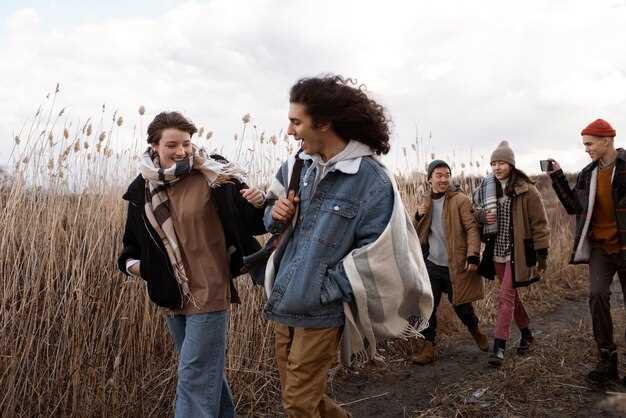Securing sponsorship for reenactment events hinges on understanding and catering to the specific interests of potential backers. Research your prospective sponsors thoroughly, identifying their values and previous sponsorship history. Offer tailored partnership opportunities that align with their brand image. For instance, if a company focuses on sustainability, highlight eco-friendly initiatives during the event which may include recycling programs or using sustainable materials. This alignment not only appeals to their interests but also solidifies a long-term relationship.
Proactive engagement is another key component in establishing successful sponsorship deals. Reach out to potential partners with a well-structured proposal that details the unique aspects of your event and the benefits sponsors will receive. Quantify these benefits, offering specifics such as audience demographics, attendance numbers, and media reach. Use compelling visuals and infographics to make your proposal stand out. Demonstrating clear value and return on investment cannot be overstated in importance to sponsors.
Maintaining transparent and regular communication with your sponsors before, during, and after the event ensures they feel valued and part of the success. Provide them with progress updates, involve them in event activities, and create exclusive networking opportunities with event participants. After the event, share detailed reports and feedback, showcasing how their contribution impacted its success. Highlighting positive outcomes helps to strengthen relationships and increases the likelihood of renewing sponsorship for future reenactments.
Structuring Sponsorship Proposals for Reenactment Events

Tailor your sponsorship proposal to the potential sponsor’s objectives by clearly aligning event goals with their brand values. Start by presenting your reenactment event’s unique aspects that mirror the sponsor’s mission or target audience.
- Define Your Audience: Provide a detailed demographic profile of your attendees, emphasizing their historical interests and engagement levels.
- Highlight Event Benefits: Illustrate exposure opportunities for sponsors. Use specific metrics such as expected attendance numbers, social media reach, and media coverage potential.
- Offer Customizable Packages: Create tiered sponsorship levels with distinct benefits and price points. Allow sponsors to choose between traditional promotions, such as banners and logo placements, and more interactive options like workshops or branded experiences.
- Integration with Sponsor’s Brand: Suggest creative ways to integrate the sponsor’s brand into the event without overshadowing the historical authenticity. This might include theming events or creating co-branded memorabilia.
- Provide ROI Projections: Offer realistic projections on return on investment, detailing how the sponsor will benefit financially and in terms of brand visibility.
- Anecdotes and Testimonials: Include success stories or testimonials from past sponsors who have seen beneficial outcomes, reinforcing the credibility and appeal of partnership.
- Follow-Up Strategy: Outline a clear plan for post-event engagement, including data reporting and ongoing partnership opportunities for future reenactment events.
Make your proposal visually appealing and concise to maintain interest, using clear headings and bullet points for easy navigation. Each section should directly address potential sponsor questions and demonstrate the tangible benefits of partnership with your reenactment event.
Defining Mutual Benefits and Goals
Articulate specific incentives for sponsors to ensure a successful partnership. Begin with identifying the target audience of your reenactment event and assess how it aligns with the sponsor’s brand objectives. For instance, if a sponsor seeks to reach history enthusiasts, highlight the number of attendees fitting this profile and how the event’s historical themes complement the sponsor’s brand narrative.
Establish clear and measurable goals. These might include audience reach, lead generation, or brand exposure, all of which should resonate with the sponsor’s marketing strategy. Present data from previous events or similar collaborations to illustrate potential outcomes. This might involve showcasing attendance figures, social media interactions, or engagement metrics from past events.
Develop a comprehensive table outlining mutual benefits, ensuring transparency and alignment:
| Goal | Benefit to Sponsor | Benefit to Event |
|---|---|---|
| Increased Brand Exposure | Extensive visibility through banners and publications | Access to sponsor’s audience via promotional channels |
| Engagement Metrics | Gather detailed insights into audience preferences | Enhanced event experience through sponsor’s interactive elements |
| Lead Generation | Capture potential customer data during event activities | Increased visitor engagement and extended post-event reach |
Maintain open communication to revisit these goals and adapt strategies if necessary. Regular updates and transparent reporting will build trust and demonstrate the event’s impact, encouraging long-term collaborations. By clearly defining mutual benefits and aligning goals, you create a solid foundation for a thriving sponsorship relationship.
How to align event objectives with sponsor interests.
Identify your event’s unique selling points and clearly define them in your proposal to potential sponsors. Understand that sponsors are looking for exposure and engagement opportunities that align with their brand values. Highlight how your reenactment event offers a distinctive platform for showcasing their products or services. For instance, if a sponsor specializes in historical attire, emphasize how your event can feature their garments in reenactments or exhibit booths.
Conduct thorough research on potential sponsors to ensure synergy between your event goals and their marketing strategies. Look for companies that have previously engaged with similar events or have shown an interest in your event’s theme. This alignment can make your pitch more persuasive as you can point to their past sponsorships as evidence of shared values.
Develop flexible and creative sponsorship packages that cater to different levels of investment and exposure. Tailor these packages to reflect both the needs of your event and the marketing objectives of potential sponsors. Consider offering exclusive event naming rights, branded merchandise opportunities, or bespoke social media campaigns that keep the sponsor in the spotlight throughout your event.
Establish metrics for success that matter to your sponsors, such as brand visibility, audience engagement, or lead generation. Share with sponsors how you will track these metrics and provide detailed post-event reports. This transparency reassures sponsors of the value they receive and encourages long-term partnerships.
Engage sponsors in the planning stages of your event to incorporate their feedback and strengthen their investment. Invite them to contribute ideas for activation opportunities or marketing tactics during the event. Such collaboration fosters a sense of ownership and can lead to more robust promotional activities.
Maintain open lines of communication throughout the sponsorship period, offering regular updates and opportunities for input. This ongoing dialogue reinforces the partnership and ensures both parties actively pursue the mutual benefits of the sponsorship arrangement.
Creating Compelling Sponsorship Packages
Focus on building customized sponsorship packages that align with the sponsor’s goals. Understand the target audience of both your event and potential sponsors to define mutual benefits clearly.
Offer tiered packages that cater to different levels of investment, such as bronze, silver, and gold tiers. Each level should provide distinct benefits, like exclusive branding opportunities, social media mentions, or product placement.
Incorporate clear metrics for success to demonstrate value. Provide tracking data and reports for sponsors, such as engagement rates or attendee demographics, ensuring they see the impact of their investment.
Include unique experiential opportunities, like VIP event access, meet-and-greets, or exclusive workshops, to increase the appeal. Such experiences can provide sponsors with memorable interactions with key audience segments.
Maintain flexibility in your offers. Tailor packages based on feedback and the evolving needs of sponsors. This willingness to adapt can foster long-term partnerships.
Lastly, enhance visibility through co-branded marketing materials, ensuring the sponsor’s brand is integral to the event’s promotion. This integration should naturally extend to all digital and print media, boosting sponsor recognition before, during, and after the event.
Crafting tiered sponsorship options to appeal to various backers.
Design diverse sponsorship packages tailored to different investment capacities and interests. Offering distinct levels of sponsorship allows each potential backer to derive value that aligns with their business goals and financial abilities.
- Basic Level: Provide entry-level sponsors with visibility in event materials and digital platforms. Recognize their support through logo placements and social media mentions.
- Intermediate Level: Create a mid-tier that adds value through booth space at the event, allowing sponsors direct engagement with attendees. Include their logos on prominent signage.
- Advanced Level: Offer top-tier sponsors exclusive opportunities such as naming rights for key event segments or premium ad placements. Facilitate curated networking sessions with key figures.
Regularly assess and adapt sponsorship tiers based on feedback and outcomes. Ensure that each tier provides clear, measurable benefits, enhancing the overall sponsor experience and encouraging long-term partnerships.
Showcasing Audience Demographics and Reach
Craft a compelling narrative with precise audience data to attract sponsors. Provide age, gender, and regional distribution details, illustrating the reenactment event’s crowd diversity. Highlight specific interests, such as historic periods or military history, that resonate with your audience, showcasing alignment with potential sponsors’ markets.
Leverage digital analytics tools to quantify online reach, including website traffic and social media impressions. Document email subscribers and engagement rates to present a well-rounded digital influence. Collaborate with past attendees to gather testimonials, augmenting demographic insights with experiential narratives.
Create visual reports integrating graphs and infographics to make data compelling and easily digestible. Tailor these presentations for different sponsor types, whether they target a specific demographic segment or a broader audience. Consistently update and refine this data repository to maintain relevance and attractiveness to current and prospective backers.
Providing potential sponsors with detailed audience insights.
Ensure transparency by offering potential sponsors a comprehensive demographic breakdown of event attendees. Highlight key data points:
- Age Distribution: Provide age brackets, emphasizing the predominant age group participating in the event.
- Geographic Location: Outline where attendees come from, focusing on local, regional, or national distribution.
- Interests and Preferences: Share surveys or research on attendees’ related interests, such as historical accuracy or specific time periods reenacted.
- Attendance Numbers: Give precise figures from previous events to show growth trends and predict future attendance.
Go further by detailing interaction patterns:
- Engagement Levels: Explain how the audience interacts with different event segments, such as workshops, live reenactments, or vendor areas.
- Social Media Behavior: Share data on hashtag use, post frequency, and prevalent platforms to demonstrate digital reach.
- Feedback and Satisfaction: Provide summary insights from post-event surveys highlighting what the audience enjoyed and areas of improvement.
Lastly, articulate audience loyalty:
- Repeat Attendance: Present statistics on recurring visitors to show loyalty and potential for cross-promotional opportunities.
- Community Involvement: Highlight how engaged participants contribute to forums or pre-event and onsite volunteer activities.
By supplying these insights, you enable sponsors to make informed decisions, aligning their brand with an event that mirrors their target demographic and marketing goals. This robust profiling not only attracts but also supports long-term partnerships.
Establishing Metrics for Success
Define clear objectives that align with both sponsors’ expectations and the event’s goals. Track attendance numbers to gauge audience engagement and demographic insights, offering quantitative data to supporters. Harness social media metrics such as engagement rates and post-event reach to demonstrate digital interaction levels.
Evaluate brand visibility by calculating media coverage and promotional content performance. Implement post-event surveys to gather feedback from participants and sponsors, identifying strengths and areas for improvement. Measure return on investment (ROI) by comparing pre-event projections with actual outcomes, ensuring transparency and trust with sponsors.
Create a dashboard for real-time monitoring of key performance indicators (KPIs), allowing for dynamic adjustments and refined strategies. Establish benchmarks based on past events to set realistic projections and foster continuous improvement. Encourage sponsors to participate in the metrics-setting process, ensuring their expectations are met and fostering long-term partnerships.
Setting up clear indicators to measure both sponsor and event performance.
Define specific objectives for your sponsorship, like increasing brand visibility or driving sales. Collaborate with sponsors to list their priorities, ensuring alignment with your event’s goals. Create a balanced scorecard to track progress, using both quantitative and qualitative metrics.
| Indicator | Event Performance | Sponsor Performance |
|---|---|---|
| Attendance | Measure actual numbers against targets | Identify sponsor-driven attendance through promotions |
| Engagement | Assess audience interaction and satisfaction levels | Evaluate sponsor booth visits and active participation |
| Brand Exposure | Track media coverage and social media mentions | Analyze increase in brand recognition across channels |
| Revenue | Compare ticket sales and merchandising revenue with forecasts | Calculate ROI from increased leads or sales |
Regularly review these indicators with sponsors to discuss outcomes and make data-driven improvements. Use surveys and feedback forms to gain insights into audience and sponsor satisfaction. Adjust your strategy based on feedback to enhance future performance.
Building Long-Term Partnerships with Event Sponsors

Begin fostering long-term relationships with event sponsors by prioritizing transparent communication. Regularly update sponsors on event developments, ensuring they feel engaged and valued. Provide tailored reports that highlight their impact and return on investment. Showcase your appreciation through personalized recognition efforts, such as shout-outs on social media or special mentions during events.
Offer sponsors exclusive benefits to maintain their interest. This can include VIP access at events, behind-the-scenes tours, or early-bird opportunities for future sponsorships. Focus on creating mutually beneficial agreements by understanding and aligning with their goals and values. A sponsor seeking to promote historical education, for instance, can be tied directly to events with a strong educational component.
Continuous engagement beyond events is key. Share post-event content and follow-up materials to demonstrate ongoing value. Surveys can collect sponsor feedback, allowing you to refine future interactions and address any concerns. Additionally, host networking gatherings or sponsor appreciation days, creating more casual opportunities for interaction.
Develop strategic sponsorship packages that adapt based on feedback and industry trends. Regularly update offerings to remain attractive and relevant. Encourage sponsors to co-create content or get involved in planning, further deepening their connection with your event. Finally, maintain detailed contact records and calendars for timely communication and renewals.
Q&A:

What are some effective strategies to attract sponsors for reenactment events?
Attracting sponsors requires a clear communication of the value your event can offer to them. This includes showcasing your audience demographics, media coverage potential, and engagement metrics from previous events. Demonstrating past successes with case studies can also help build confidence. Additionally, offering tiered sponsorship packages with various levels of exposure and benefits can appeal to different types of sponsors, catering to both small businesses and larger corporations.
How can reenactment event organizers ensure that sponsors stay committed in the long term?
Maintaining long-term relationships with sponsors involves consistent communication and delivering on promises. Provide sponsors with regular updates, reports, and insights post-event to demonstrate the impact of their sponsorship. Moreover, personalizing the relationship by inviting sponsors to be part of the event’s planning process can increase their feeling of involvement and commitment. Tailoring packages as per each sponsor’s evolving needs also plays a significant role in retention.
What types of businesses are typically interested in sponsoring historical reenactment events?
Businesses with a historical connection or a target audience interested in history tend to be more inclined to sponsor reenactment events. These can include local heritage sites, museums, educational institutions, and companies selling history-related products such as books, costumes, or equipment used in reenactment. Additionally, local businesses looking to engage with a community-oriented audience may also find value in sponsorship.
Are there any common pitfalls to avoid when negotiating sponsorship deals?
One common pitfall is overpromising what you can deliver to sponsors. It’s important to set realistic expectations and ensure clarity in contracts about what each party is responsible for. Another mistake is neglecting the relationship after the initial agreement is signed; continuous engagement and acknowledgment of the sponsor’s contribution are key to avoiding misunderstandings. Finally, failing to tailor sponsorship packages to different sponsor needs can lead to missed opportunities.
How can the success of a sponsorship agreement be measured in the context of reenactment events?
The success of a sponsorship agreement can be measured through various metrics such as increased brand awareness for the sponsor, engagement levels on social media, attendance numbers at the event, and feedback from both sponsor and attendees. Surveys conducted post-event can also provide qualitative insights into how well the sponsorship was received. These measurements help in understanding the return on investment for both the event organizers and the sponsors.
How can reenactment event organizers effectively attract sponsors?
To attract sponsors, reenactment event organizers should focus on identifying potential sponsors whose brand values align with the historical nature of these events. This involves researching companies with an interest in history, education, or community engagement. Organizers should present a well-structured proposal that outlines potential marketing benefits for sponsors, such as increased brand visibility and targeted audience engagement. Highlighting past success stories and providing detailed audience demographics can demonstrate the potential return on investment for sponsors. Additionally, organizers can offer customized sponsorship packages that cater to different sponsorship levels and deliver unique brand integration opportunities.




